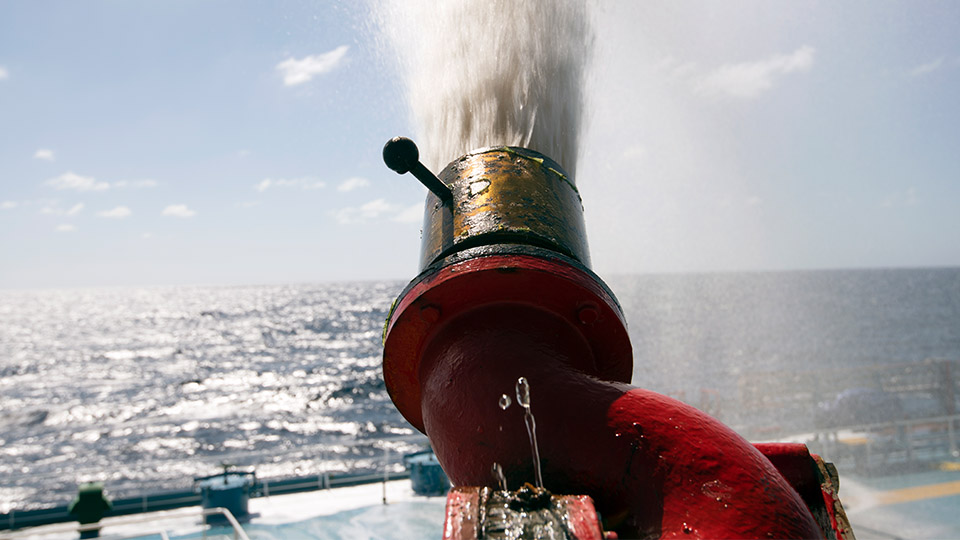
CONTACT BIMCO
Ashok Srinivasan
Manager, Maritime Safety & Security
Singapore, Singapore
- +65 9144 3404
- hsse@bimco.org

To protect crew against exposure to dangerous substances used in fire-fighting systems, as well as to minimise the impact on the environment, the IMO’s Sub-Committee on Ship Systems and Equipment (SSE) has finalised prohibition of perfluoro-octane sulfonic acid (PFOS) from fire-fighting systems on board ships
PFOS is part of a group of related chemicals known as perfluorinated alkylated substances (PFAS). This is also called perfluorochemicals (PFCs). This group of chemicals is commonly used in a wide range of industrial processes and is found in many consumer products.
PFAS are a group of very stable compounds, and their unique combination of physio-chemical properties make them extremely persistent. Due to its high tendency to bioaccumulate, PFOS, has been found in notable concentrations in Arctic animals such as polar bears, seals, bald eagles and in minks, birds and fish. PFOS is toxic to humans, and there is growing evidence that long-chain PFAS could cause liver malfunction, disruptive effects on the immune and endocrine system, adverse neurobehavioral effects, testicular and kidney cancer, and other adverse effects. Due to its long-term persistent accumulation, humans, wildlife and the environment are continually exposed.
Studies in workers and people living in areas with high levels of PFOS in drinking water show that PFOS may also increase cholesterol, cause pregnancy-induced hypertension, increase the risk for thyroid disease, decrease antibody response to vaccines, decrease fertility, and cause small decreases in birth weight 1,2. The United States Environmental Protection Agency (US EPA) has classified PFOS as having suggestive evidence of carcinogenic potential3.
On ships, this chemical may be found in firefighting foam compounds.
Following a proposal from Canada, Norway and the United States, and after deliberations at Maritime Safety Committee (MSC), the IMO SSE 8, proceeded to prohibit the use of PFOS from new ships from 1 January 2026 and to phase out the substance from existing ships no later than five years from the date of this requirement coming into force. Also, it was agreed that when substances containing PFOS are removed from the ship, they shall be delivered to appropriate reception facilities. .
The necessary amendments have been made to the International Convention for the Safety of Life at Sea (SOLAS) convention and the High-Speed Craft HSC codes such as 1994 HSC Code and 2000 HSC Codes.
It is expected that the parent committee MSC will adopt this amendment in November 2022.
(1) ATSDR. Toxicological Profile for Perfluoroalkyls - Draft for Public Comment. In: Registry AfTSaD, ed. Atlanta, GA2017
(2) USEPA. Drinking Water Health Advisory for Perfluorooctane sulfonic acid (PFOS) In. Vol EPA 822R-16-0042016
(3) USEPA. Health Effects Support Document for Perfluorooctane sulfonic acid (PFOS) In. Vol EPA 822-R-16-0022016